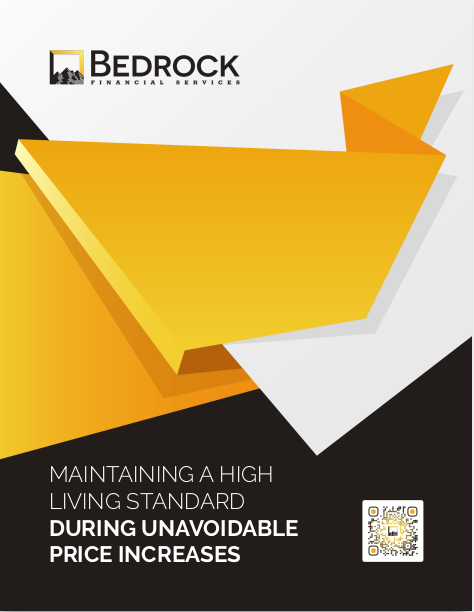Key Takeaways
-
A retirement plan that tells a story connects emotional goals with financial benchmarks, helping clients stay engaged and committed.
-
Your ability to structure a retirement narrative rooted in life phases and key transitions will separate you from advisors who only crunch numbers.
Why Stories Still Matter—Even in Spreadsheets
You aren’t required to be a novelist or a marketing expert. But as a financial professional, your ability to link facts to feeling can dramatically change how your clients view their retirement plan.
This isn’t about being creative for creativity’s sake. It’s about giving the plan context, color, and continuity.
If your client doesn’t recognize themselves in the plan, they won’t trust it. And if they don’t trust it, they won’t follow it.
How to Begin a Retirement Story Clients Care About
The best place to start isn’t with charts or calculators. It’s with a question:
“What do you want the next chapter of your life to look like?”
From there, you begin to sketch out a story arc:
-
Act I: Working Years
-
The buildup, the savings stage, the foundational decisions.
-
-
Act II: Transition Phase (Pre-Retirement)
-
MRA, last contributions, debt reductions, legacy planning.
-
-
Act III: Retirement Life
-
Distribution, tax strategy, healthcare costs, lifestyle pacing.
-
By organizing your planning process like a three-act play, you create a structure that’s both familiar and forward-looking. It feels personal because it is.
Building Emotional Relevance Into the Plan
Emotionally disconnected clients disengage. That’s why a story-driven plan isn’t just nice to have—it’s essential.
You can add relevance by connecting numbers with milestones:
-
Turning 55 and qualifying for penalty-free TSP withdrawals if separated from service
-
Turning 59½ for traditional IRA or 401(k) access
-
Starting Medicare eligibility at 65
-
Reaching the Required Minimum Distribution age of 73
Each of these isn’t just a rule; it’s a turning point. It’s a page in their personal retirement story. Present it that way.
Use Visual Storytelling to Guide Conversations
Graphs and charts don’t need to be dry. Use them to illustrate chapters:
-
A chart that shows the glidepath of income from full-time salary to phased withdrawals
-
A timeline that overlays key benefit eligibility dates
-
A pie chart that changes shape as the client moves from accumulation to preservation
When you present numbers in a narrative arc, your client begins to visualize their future instead of just interpreting data.
Turning Goals Into Scenes and Dialogues
Retirement goals are often vague until they’re anchored in a storyline. Instead of a goal like “spend time with family,” position it as a scene:
-
“By age 68, I want to spend two months each year visiting my grandchildren across the country.”
Then structure the financial component around it:
-
Annual travel fund
-
Budget for healthcare during travel
-
Timing withdrawals to match seasonal trips
Now your plan isn’t just about reaching a number; it’s about enabling a real life moment.
Don’t Skip Over Setbacks—They’re Part of the Plot
Not every chapter is smooth. In fact, some of the most critical parts of a retirement plan involve anticipating challenges:
-
Unexpected health expenses
-
Market downturns during early retirement years
-
Shifts in Social Security or tax policy
Frame these not as roadblocks, but as plot twists your plan already accounts for.
Your client feels more confident when they know the story has room for detours without derailing the entire arc.
Matching Financial Tools to Story Themes
The narrative you build can help you select and explain planning tools more effectively.
For example:
-
If the story involves a phase of caregiving for a parent or spouse, LTC funding tools become more relevant.
-
If the client anticipates relocation, discuss property management, tax implications, and liquidity options.
-
If the client wants to phase out of work, layer part-time income with strategic distributions and benefit coordination.
Every financial product or tool you suggest should feel like a character in their story—serving a role with purpose.
Retirement Isn’t Just a Date—It’s a Narrative Progression
You know this already: clients don’t stop needing your help at retirement. That’s just the midpoint.
The story continues with:
-
Adapting withdrawal strategies to match real spending patterns
-
Adjusting for inflation and evolving lifestyle costs
-
Reviewing and possibly revising estate plans
Staying engaged means staying relevant in their ongoing story. Keep the structure fluid but intentional.
The Role of Time Horizons and Timing Pivots
Not every story moves at the same pace. Some clients retire at 62, others at 70. Some ease out over 5 years.
You should build flexibility by layering multiple time horizons:
-
Short-term (0–5 years): Retirement entry and transition
-
Mid-term (5–15 years): Spending calibration, risk management, lifestyle anchoring
-
Long-term (15+ years): Healthcare, legacy planning, RMD compliance
Use these timeframes to set expectations for change, evolution, and reflection.
Giving Clients a Narrative They Can Retell
A client who can explain their retirement plan to their spouse, children, or even a friend is a client who truly understands it.
That understanding starts with the way you frame the conversation. If their story flows clearly, it makes their decision-making easier. It improves confidence. And it reduces second-guessing during difficult moments.
Even if they forget the dollar amount in column D, they won’t forget why they’re taking that distribution next summer.
How to Structure a Story-Driven Review Meeting
Your annual review process can follow the same storytelling arc. Instead of running down a checklist, consider framing the conversation like this:
-
“Where are we in your story right now?”
-
“What chapter is coming up next?”
-
“Do we need to adjust the plot based on anything new?”
This approach turns annual meetings into strategic sessions instead of audits. Clients engage more because they feel involved, not inspected.
Practical Implementation for Professionals
You don’t need to change your entire process to start using storytelling. Begin with:
-
Adding a timeline section to your plan presentation
-
Framing tax strategies as “scene transitions”
-
Using case-styled dialogue in client notes to show context
-
Asking for one emotional goal at the start of every new client intake
These adjustments don’t add more time to your meetings. They add more meaning.
Let Your Process Evolve With the Story
A plan built in 2025 may look outdated by 2035 if it’s too rigid. A story, however, evolves. The characters age. New priorities emerge.
Design your planning system to invite updates:
-
Quarterly reflection prompts
-
Pre-retirement workshops focused on future pacing
-
Post-retirement check-ins that explore new ambitions
Clients who feel like they’re co-authoring their plan will be more likely to stick to it.
When the Retirement Story Becomes a Legacy
At a certain point, your client’s story becomes someone else’s. Whether through charitable intent, family transfers, or business succession, the next generation steps in.
You can help clients shape that handoff:
-
Prepare family meeting agendas
-
Include legacy letters alongside legal documents
-
Incorporate long-term care planning into estate strategies
Legacy is not a line item. It’s the epilogue that ties the narrative together.
The Storyline Is What Makes It Stick
If you want clients to not just start a plan but finish one, it needs to live beyond spreadsheets.
Clients crave more than math. They want meaning. They want to see their life reflected in the planning conversation.
That’s what keeps them connected through market shifts, tax changes, and the slow churn of time.
We help professionals like you turn financial plans into living narratives that clients relate to. At Bedrock Financial Services, we offer tools, automation, and marketing support to structure your practice around meaningful engagement. Sign up today and let us help you bring more clarity and confidence into every client story.







